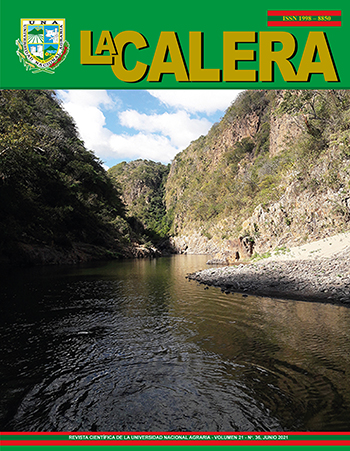Comportamiento vegetativo del culantro (Eryngium foetidum L.) empleando tres sustratos a nivel de vivero
DOI:
https://doi.org/10.5377/calera.v21i36.11449Palabras clave:
plantas medicinales, huerto casero, plantas alimenticiasResumen
La especie Eryngium foetidum L, ha sido tradicionalmente utilizada con fines culinarios y medicinales, se ha cultivado en huertos caseros utilizando como sustrato el suelo existente sin ningún tipo de fertilización. En este estudio el principal objetivo es determinar el comportamiento del desarrollo vegetativo de la especie de culantro (Eryngium foetidum L.) utilizando diferentes sustratos a nivel de vivero, ubicado en la Facultad de Recursos Naturales y el Ambiente de la Universidad Nacional Agraria en Managua Nicaragua. Se utilizó un diseño de bloque al azar con tres tratamientos que consistieron en tres sustratos: 1) suelo vegetal (100 %), 2) combinación (suelo vegetal + arena + bokashi) y 3) bokashi (100 %). Las variables evaluadas fueron prendimiento, longitud del tallo floral, longitud y ancho de hojas, las que fueron medidas a los 14, 28 y 60 días después de sembrados los tallos de culantro. EL mayor prendimiento de tallos obtenido se presentó en el sustrato suelo con el 90 %. Se muestran que los mayores valores tanto en longitud como el ancho y numero de hojas por planta lo presentó el tratamiento suelo. Se determinó el contenido de humedad a nivel de laboratorio obteniendo que el sustrato bokashi presenta el mayor valor con 75 %. En relación con la biomasa verde de la parte aérea y radicular de la planta el mejor resultado lo presenta el sustrato suelo vegetal con 36.7 g y en peso seco con 13.9 g. La mayor longitud de raíces se registró con el sustrato combinación.
Descargas
583
EPUB 188

